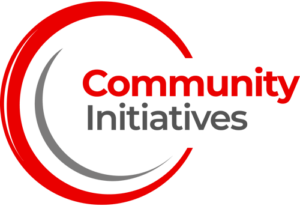Last fall, Community Initiatives commissioned a Satisfaction Survey to determine how well we are doing with our fiscally sponsored projects. This project was led by Professor Jeff Prottas of Brandeis University, and was informed by his extensive experience with nonprofits and fiscal sponsors. It was a confidential survey to projects to ensure the objectivity of the results. The results are in, and Dr. Prottas declared: “The glass is not half full; it’s more than 80 percent full!”
Below are some survey highlights:
- 92 percent of projects were satisfied with our new project specialist model.
- Our overall project satisfaction rate is 85 percent.
- Satisfaction rate of 81-86 percent is stable across new and veteran projects.
- 90 percent of “small projects” (with annual budgets of >$200,000) report satisfaction.
- 90 percent were satisfied with Community Initiatives’ communications.
- 85 percent of projects consider the cost of Community Initiatives’ services worthwhile.
- 82 percent said they would recommend Community Initiatives.
According to Dr. Prottas, “This is a very high level of satisfaction. Indeed, as a general matter, a 90 percent approval rate is close to as high as such things go. 100 percent of anything, much less a diverse group of activist projects, borders on the unobtainable.”
Areas For Improvement
This survey identified a number of ways that we can improve services to projects—namely in how we communicate the extent to which our professional services are supporting all projects everyday. Interestingly, many projects significantly underreport their use of key services like financial services, insurance, and human resources. While 100 percent of projects do use these services in one way or another, usage rates were reported as follows:
- 77 percent report using financial services, but Community Initiatives is fiscally responsible (and legally liable) for 100 percent of project spending (Model A projects).
- 50 percent report using insurance, but 100 percent of projects are protected by Community Initiatives’s insurance policies because of events, Advisory Committee meetings and actions, or programmatic activities.
- 28 percent report using human resource services, but 100 percent of projects access human resource services including payroll, benefits, HR policies, and advice on numerous issues from independent contractors vs. employees to use of volunteers.
Dr. Prottas’ analysis determined that “When things are going smoothly these services are invisible.” Those that do report usage of all services are most likely to be satisfied and even recommend Community Initiatives to their colleagues, so it is critical that we help projects understand how these services are supporting their projects everyday. Based on this feedback, Community Initiatives is committed to more clearly communicating the services provided to all of our fiscally sponsored projects. If your project feels that you are not utilizing the full extent of services available to you, do not hesitate to contact your Program Services Specialist for additional support.
Methodology
Based on phone interviews with a selection of projects, Dr. Prottas developed a survey that was sent to all projects. The results reported here reflect a 60 percent response rate, which is considered “very satisfactory” by Dr. Prottas.
